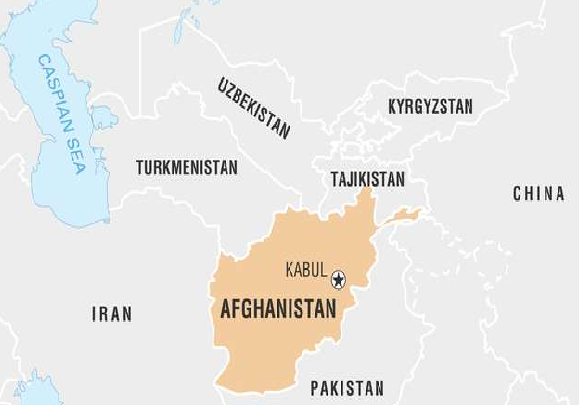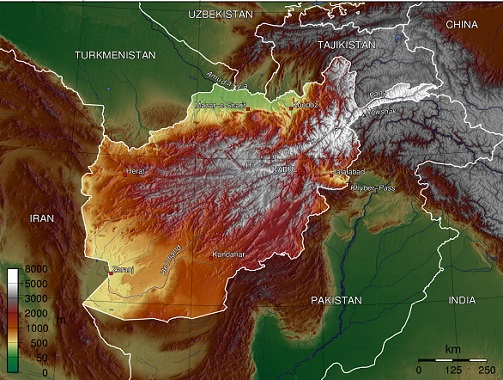Afghanistan, situated in South Central Asia is facing troubles evident to the world now. The Taliban has captured the country and is now forming a new interim government to rule the same. The President Ashraf Ghani has left the country and his people already. Take a look at various tweets revealing the conditions in Afghanistan here.
This is heartbreaking and infuriating.
— Jagan Patimeedi (@JAGANTRS) August 17, 2021
640 passengers in 1 aircraft. This extraordinary image has emerged that appears to show hundreds of Afghans packed into a US military cargo plane, in a desperate attempt to flee Kabul after the fall of the capital to Taliban.#Afghanistan pic.twitter.com/zHkdPb1DDH
MG Taylor: By the end of the day, we expect nearly 3,000-3,500 total Troops on the ground. As of 1535 local time, the air field was open for operations. Shortly after, the first C-17 landed with US Marines on board. The next C17 is preparing to land as we speak. pic.twitter.com/Osy5VyLNRa
— Department of Defense 🇺🇸 (@DeptofDefense) August 16, 2021
White House National Security Advisor Jake Sullivan: We have a proven ability to fight terrorism effectively without having a large military footprint on the ground – and we will hold the Taliban accountable to not allowing Al Qaeda to have a safe haven in Afghanistan. pic.twitter.com/FTu3Qxla2A
— The White House (@WhiteHouse) August 16, 2021
Afghanistan: Quick Facts
Name: Islamic Republic of Afghanistan
Capital: Kabul
Population (approx): 34,940,837
Official Language: Dari (Afghan Persian), Pashto
Currency: Afghani
Area of the country: 652,230 square kilometers
Afghanistan's Geography:

- Afghanistan is a landlocked country situated in Central South Asia.
- It has Iran to its west and Pakistan to its east
- Afghanistan can be divided into the central highlands, the northern plains, and the southwestern plateau.
- The country has tall mountains and dry deserts both covering most of its landscape.
- The summers are hot and dry whereas the winters are extremely cold, especially the north of the Hindu Kush mountains.
- Hindu Kush is located on the eastern side of the country close to Pakistan and Tajikistan.
- Hindu Kush when reaches almost 100 miles (160 km) north of Kabul, spreads out and continues westward as a series of ranges under the names of Bābā, Bāyan, Sefīd Kūh (Paropamisus), and others.
- Other ranges include Sīāh Kūh, south of the Harīrūd, the Ḥeṣār Mountains, Mālmand and Khākbād etc.
- It is so isolated from the waters of the Indian ocean by the mountains that it has dry climate most of the year.
- The main rivers are the Kabul river that meets the Arabian sea by joining Indus and Amu Darya originating from the glaciers of the Pamir. There is also river Harīrūd that drains the north of Afghanistan.

Afghanistan: People and Culture
Almost 15 million people reside in Afghanistan and more than half of their population are Pashtuns and live around Kandahar.
The Pashtuns came to the country 3200 years ago and are related to the Persians of Iran.
The Hazaras live in the mountains of Central Afghanistan and are the descendents of Mongols as their language Dari has many Mongol words.
Many nomads called Kuchi lead their herds of animals across the country and into the mountain pastures for grazing.
Tea is the favorite Afghan drink.
The most popular meal is called palau that is made from rice, sheep and goat meats, and fruit.
Afghanistan: History
Afghanistan saw its settlement in around 7000 B.C. and has been in transition for most of its history.
It began when Alexander conquered this country in 330 B.C. He was the one who brought Greek language and culture to Afghanistan.
Genghis Khan's Mongols invaded Afghanistan in the 13th century and ruled there for a long time. In 1747, Pashtuns conducted a council called a Loya Jirga and created the kingdom of the Afghans.
The British also fought three wars in the 19th and 20th centuries against Afghanistan, but were finally defeated in 1919. Afghans then formed an independent monarchy in 1921.
The boundaries of the modern Afghanistan were established in late 19th century in the context of a rivalry between imperial Britain and tsarist Russia.
In 1978, the People's Democratic Party of Afghanistan (PDPA) seized power in the country, setting in motion a series of events that would turn the poor, mostly peaceful country into a breeding ground for terrorism.
The PDPA’s occupation of the country then led to civil war and the birth of Taliban.
The Taliban emerged in 1994 and quickly began to take over cities across Afghanistan, with military support from Pakistan.
GK Quiz on Afghanistan and Taliban: Test your knowledge here
Comments
All Comments (0)
Join the conversation